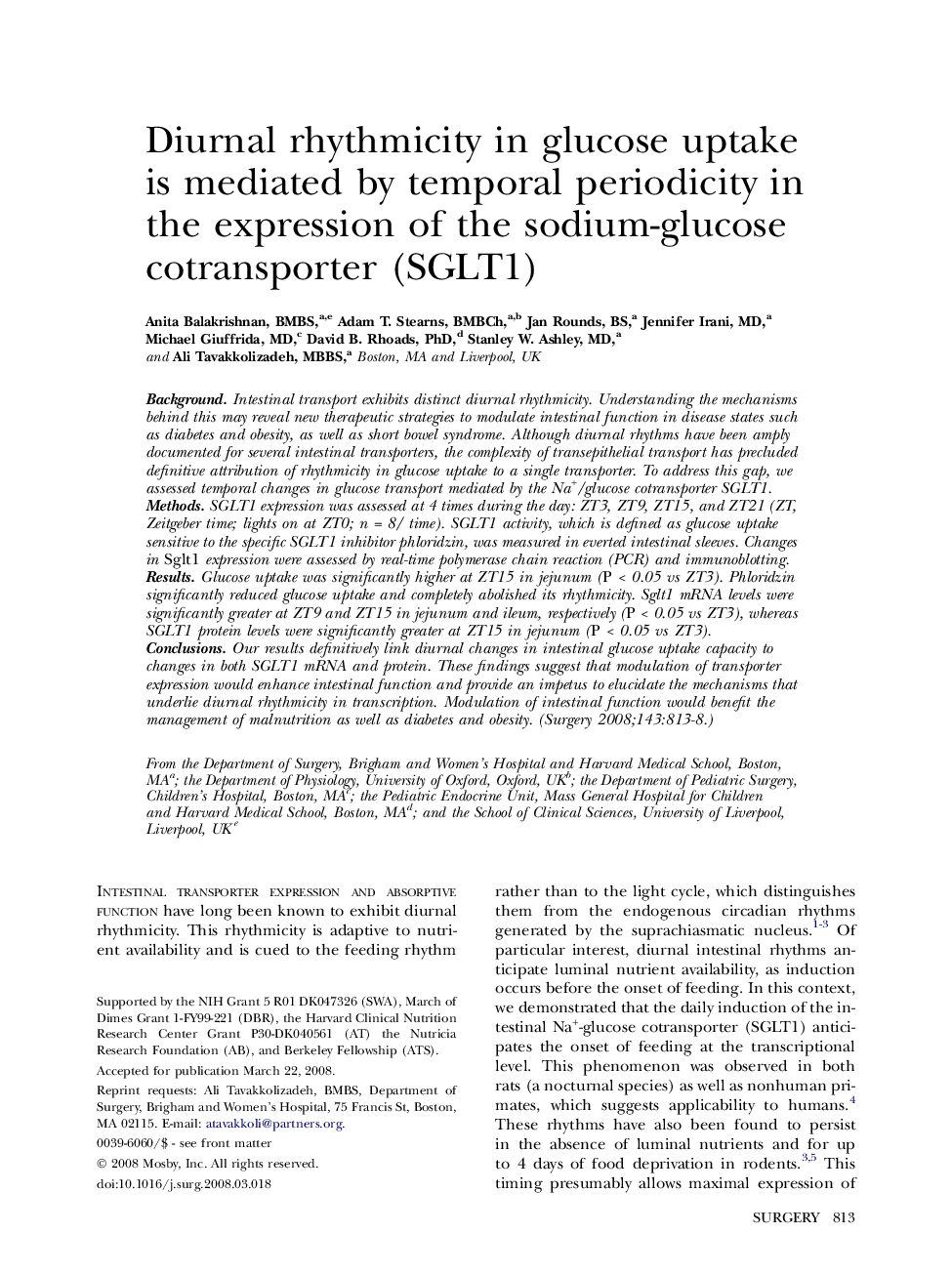| Article ID | Journal | Published Year | Pages | File Type |
|---|---|---|---|---|
| 4309924 | Surgery | 2008 | 6 Pages |
BackgroundIntestinal transport exhibits distinct diurnal rhythmicity. Understanding the mechanisms behind this may reveal new therapeutic strategies to modulate intestinal function in disease states such as diabetes and obesity, as well as short bowel syndrome. Although diurnal rhythms have been amply documented for several intestinal transporters, the complexity of transepithelial transport has precluded definitive attribution of rhythmicity in glucose uptake to a single transporter. To address this gap, we assessed temporal changes in glucose transport mediated by the Na+/glucose cotransporter SGLT1.MethodsSGLT1 expression was assessed at 4 times during the day: ZT3, ZT9, ZT15, and ZT21 (ZT, Zeitgeber time; lights on at ZT0; n = 8/ time). SGLT1 activity, which is defined as glucose uptake sensitive to the specific SGLT1 inhibitor phloridzin, was measured in everted intestinal sleeves. Changes in Sglt1 expression were assessed by real-time polymerase chain reaction (PCR) and immunoblotting.ResultsGlucose uptake was significantly higher at ZT15 in jejunum (P < 0.05 vs ZT3). Phloridzin significantly reduced glucose uptake and completely abolished its rhythmicity. Sglt1 mRNA levels were significantly greater at ZT9 and ZT15 in jejunum and ileum, respectively (P < 0.05 vs ZT3), whereas SGLT1 protein levels were significantly greater at ZT15 in jejunum (P < 0.05 vs ZT3).ConclusionsOur results definitively link diurnal changes in intestinal glucose uptake capacity to changes in both SGLT1 mRNA and protein. These findings suggest that modulation of transporter expression would enhance intestinal function and provide an impetus to elucidate the mechanisms that underlie diurnal rhythmicity in transcription. Modulation of intestinal function would benefit the management of malnutrition as well as diabetes and obesity.
